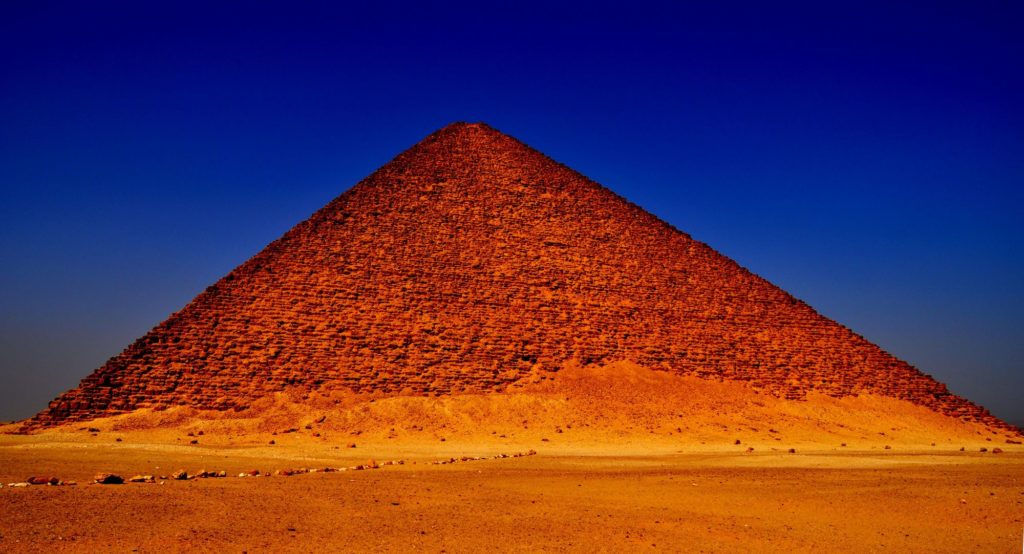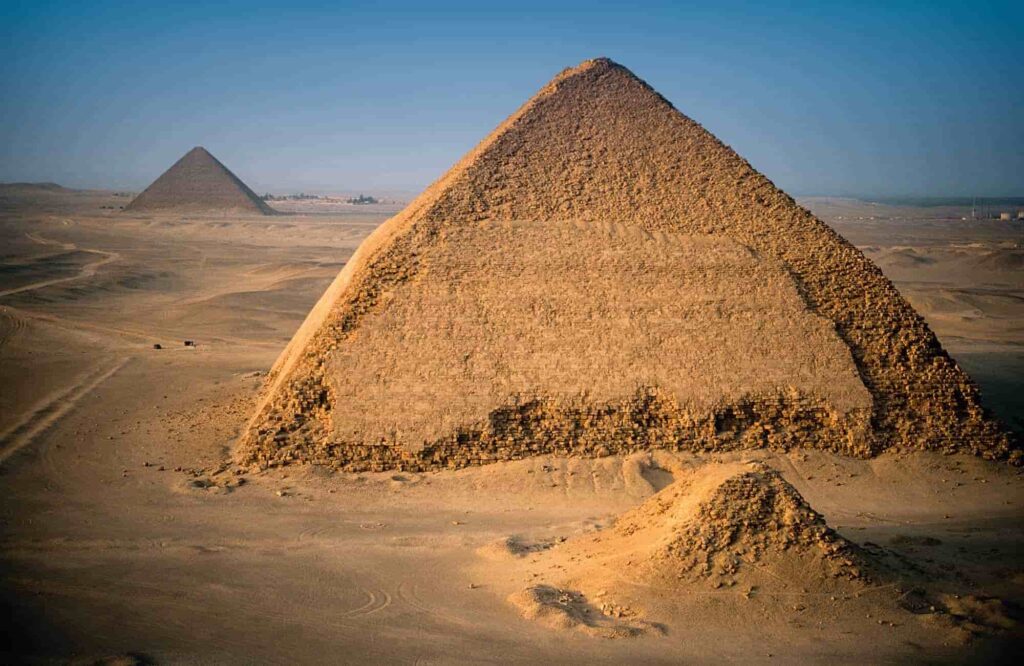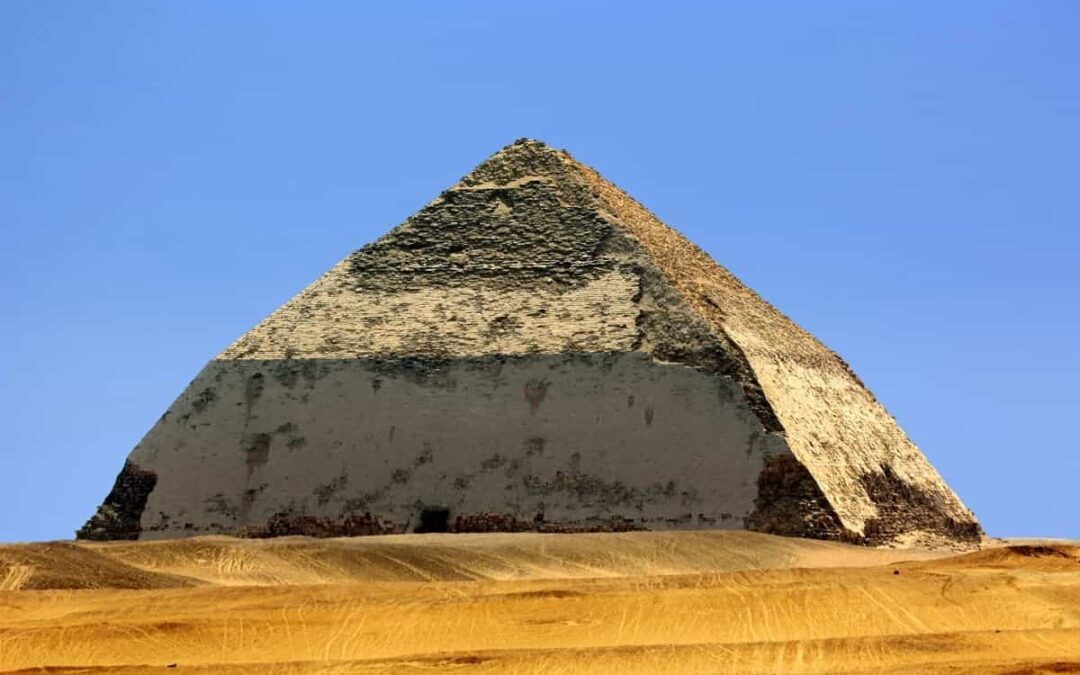It may not be the most famous, but the Great Pyramid of Khufu owes its existence to this pyramid.
From a distance, something seems amiss. One expects the classic shape of a pyramid, with its smooth and flawless faces, akin to those seen in the Giza Valley, rather than the silhouette with broken edges.
However, the Dahshur Bent Pyramid possesses the charm of imperfection and serves as a pivotal piece in the development of the grand pyramids constructed by the pharaohs of the 4th Dynasty in ancient Egypt.
Situated 40 kilometers from Cairo, Dahshur served as a testing ground for ancient Egyptians to experiment architecturally until they constructed the first-ever smooth-sided pyramid in history, the Red Pyramid.
Both pyramids were built during the reign of Sneferu in the Old Kingdom, who was the father of the renowned Khufu, the first pharaoh of the 4th Dynasty (2543-2436). In other words, without the bent pyramid, the Great Pyramid would not have come to fruition.
Initially, the Dahshur rhomboid pyramid was designed as a “classical” 60-degree inclined pyramid. However, something must have occurred after reaching a height of 47 meters, as the slope of its faces was reduced to 43 degrees, resulting in its distinctive “angled” appearance.
Researchers still disagree on whether this alteration in slope was due to structural reasons or was intentionally done.
Apart from its unique shape, the Dahshur Bent Pyramid stands out for retaining most of its original casing stones (no, the pyramids did not have the current stepped appearance).
Moreover, the Dahshur archaeological complex is recognized as a UNESCO World Heritage Site (Memphis and its necropolis – Pyramid areas from Giza to Dahshur).










